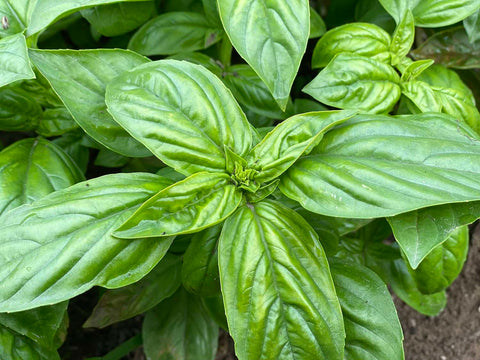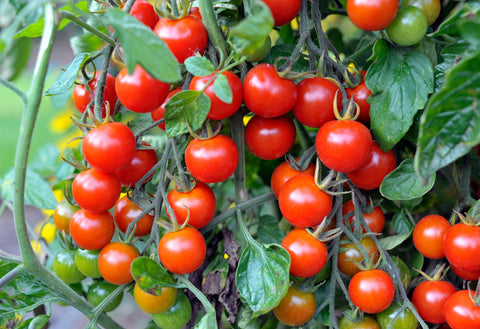As winter begins to wane and the first signs of spring emerge, gardeners eagerly anticipate the opportunity to breathe new life into their outdoor spaces. March, often considered the bridge between winter and spring, offers the perfect opportunity to add color and vibrancy to garden beds and borders. In this comprehensive guide, we'll explore ten stunning flowers that bloom in March, along with essential tips for growing them successfully. From the cheerful daffodils to the elegant camellia, these blooms are sure to brighten your garden and usher in the arrival of spring with style.The following content also has some reference value for raised garden beds.
March Flowers to Brighten Your Garden
1. Daffodil (Narcissus):
Few flowers evoke the spirit of spring quite like the daffodil. With its vibrant yellow or white petals and trumpet-shaped center, the daffodil symbolizes renewal and rebirth. These hardy bulbs are easy to grow and thrive in a variety of conditions, making them a favorite among gardeners of all skill levels. Plant daffodil bulbs in the fall, and come March, you'll be rewarded with a dazzling display of sunny blooms that brighten even the gloomiest of days.
2. Crocus (Crocus):
As one of the earliest bloomers of spring, the crocus is a welcome sight after the long winter months. These diminutive flowers emerge from the ground in shades of purple, white, and yellow, dotting the landscape with splashes of color. Crocuses are ideal for naturalizing in lawns, rock gardens, or beneath deciduous trees, where their delicate blooms can be admired up close. Plant crocus bulbs in the fall for a charming display that signals the arrival of warmer days ahead.

3. Tulip (Tulipa):
Renowned for their elegant beauty and vibrant hues, tulips are a staple of spring gardens worldwide. Available in a wide range of colors, shapes, and sizes, tulips offer endless possibilities for garden design. Whether planted en masse in flower beds or showcased in containers on patios and porches, tulips never fail to make a statement. Plant tulip bulbs in the fall for a stunning display of blooms that will brighten your garden in March and beyond.
4. Primrose (Primula):
With their delicate, petal-like flowers and vibrant colors, primroses are a charming addition to any spring garden. These early bloomers come in a variety of shades, from soft pastels to rich jewel tones, adding a touch of whimsy to the landscape. Primroses thrive in partial shade and moist, well-drained soil, making them perfect for planting beneath trees or in woodland gardens. Plant primrose plugs or divisions in the fall for a cheerful display that welcomes the arrival of spring.
5. Hyacinth (Hyacinthus):
Known for their intoxicating fragrance and densely packed blooms, hyacinths are a true delight for the senses. These spring-flowering bulbs produce clusters of fragrant flowers in shades of blue, pink, purple, and white, creating a captivating display in garden beds and containers. Plant hyacinth bulbs in the fall, and come March, you'll be treated to an abundance of colorful blooms that perfume the air with their sweet scent.
6. Forsythia (Forsythia):
A harbinger of spring, the forsythia shrub bursts into bloom in March, covering its arching branches with a profusion of golden-yellow flowers. These early-flowering shrubs are a sight to behold, signaling the end of winter and the beginning of a new growing season. Forsythias are easy to grow and require minimal maintenance, making them a popular choice for gardeners seeking to add a splash of color to their landscape.

7. Camellia (Camellia):
With their exquisite blooms and glossy evergreen foliage, camellias are prized for their beauty and versatility in the garden. These elegant shrubs produce an abundance of flowers in shades of pink, red, and white, adding a touch of elegance to any landscape. Camellias thrive in partial shade and well-drained soil, making them ideal for planting beneath trees or in sheltered garden beds. Plant camellias in the fall for a stunning display of blooms that will brighten your garden in March and beyond.
8. Pansy (Viola):
Cheerful and charming, pansies are a favorite among gardeners for their vibrant colors and resilient nature. These cool-season annuals come in a wide range of hues, from bold primaries to soft pastels, making them perfect for adding a pop of color to flower beds, borders, and containers. Pansies are easy to grow and require minimal maintenance, making them an ideal choice for beginner gardeners or those with limited time and space.
9. Aster (Aster):
As summer fades into fall, asters take center stage in the garden, offering a burst of late-season color that extends well into October. These hardy perennials produce an abundance of daisy-like flowers in shades of purple, pink, blue, and white, attracting butterflies and other pollinators to the garden. Asters are versatile plants that thrive in full sun to partial shade and well-drained soil, making them a valuable addition to any garden bed or border. Provide support for taller varieties, as they may become top-heavy when in full bloom.
10. Lily (Lilium):
Lilies are known for their elegant blooms and intoxicating fragrances, making them a beloved addition to any garden. These perennial bulbs produce towering stems adorned with clusters of trumpet-shaped flowers in shades of white, pink, red, orange, and yellow, adding drama and elegance to the landscape. Plant lily bulbs in the fall, about 6-8 inches deep in well-drained soil, and in a location with full sun to partial shade. Mulch around the base of the plant to retain moisture and suppress weeds.
Tips for Growing Flowers in March

- Prepare the soil: Before planting any flowers, take the time to prepare the soil by adding organic matter, such as compost or aged manure, to improve soil structure and fertility.
- Choose the right location: Select a sunny or partially shaded location for your flowers, taking into account their specific light and soil requirements.
- Plant at the right depth: Follow the recommended planting depth for each type of flower, as planting too shallow or too deep can affect their growth and flowering.
- Water regularly: Keep the soil consistently moist, especially during dry spells, to ensure healthy growth and blooming.
- Mulch around plants: Apply a layer of mulch around the base of plants to retain moisture, suppress weeds, and regulate soil temperature.
- Deadhead spent flowers: Remove faded blooms regularly to encourage continuous blooming and prevent the plant from expending energy on seed production.
- Provide support: Stake taller plants or those with heavy blooms to prevent them from toppling over in strong winds or heavy rain.
- Fertilize as needed: Feed your flowers with a balanced fertilizer according to package instructions to promote healthy growth and flowering.
Conclusion
March offers a wealth of opportunities for gardeners to brighten their outdoor spaces with a stunning array of flowers. By choosing the right plants and following these essential tips for growing flowers in March, you can create a vibrant and colorful garden that celebrates the arrival of spring in style. Whether you prefer the cheerful daffodil or the elegant camellia, there's a March flower to suit every taste and style. So roll up your sleeves, dig in the dirt, and watch as your garden comes to life with color and beauty this spring.









